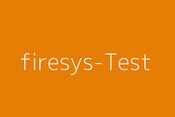The toolsxbrl functions: Unterschied zwischen den Versionen
Keine Bearbeitungszusammenfassung |
Keine Bearbeitungszusammenfassung |
||
| Zeile 48: | Zeile 48: | ||
== See also == | == See also == | ||
[[Datei:Navigation_hoch.svg|link=]] [[ | [[Datei:Navigation_hoch.svg|link=]] [[Publish_contents_with_firesys|Publish Word contents]] <br> | ||
[[Datei:Navigation_rechts.svg|link=]] [[ | [[Datei:Navigation_rechts.svg|link=]] [[Prepare_web_version|Prepare a web version in Word]] <br> | ||
[[Datei:Navigation_rechts.svg|link=]] [[ | [[Datei:Navigation_rechts.svg|link=]] [[Export_for_translators|Prepare contents for the export for the translator ]] <br> | ||
{{MoreContent}} | {{MoreContent}} | ||
Version vom 6. Dezember 2019, 07:46 Uhr
| |||||
|
The toolsxbrl interface is divided into four areas, giving you direct access to all primary functions of the XBRL tagger so you can quickly and easily create your ESEF-compliant business report. more
|
The toolsxbrl menu ribbon has a two-row bar containing the most important tools. toolsxbrl displays the most important functions from the ribbon as an icon in the second row. more |
With toolsxbrl you can configure each Word document individually, define document-specific settings and specify default/advanced and package settings. more
| |||
|
|
The toolsxbrl interface is structured by four central working areas. You can find more information about the individual managers and displaying the results in toolsxbrl here. more
| ||||
See also
![]() Publish Word contents
Publish Word contents
![]() Prepare a web version in Word
Prepare a web version in Word
![]() Prepare contents for the export for the translator
Prepare contents for the export for the translator

